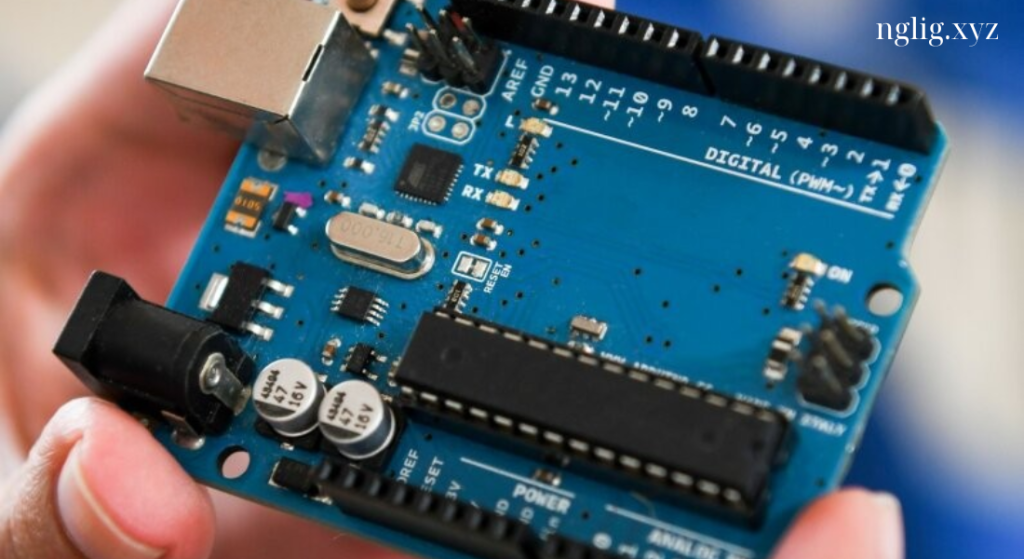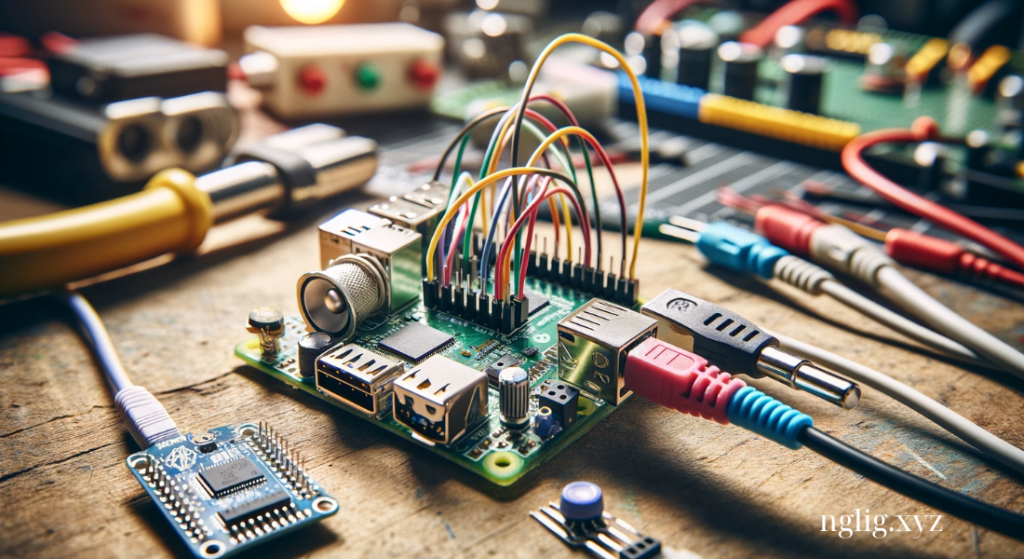Integrated Circuits (ICs) from Microchip Technology are trusted across industries for their reliability, advanced functionality, and compatibility with a wide range of electronic systems. Microchip ICs cover various types of applications, from simple microcontrollers to high-performance processors and specialized chips, meeting the needs of consumer electronics, industrial automation, automotive systems, and more.
This article delves into some of the best Microchip ICs available, highlighting their features, applications, and what makes them the top choices for embedded system developers and electronics enthusiasts.
Why Microchip ICs are Preferred in Embedded Systems
Microchip Technology has a reputation for producing high-quality ICs that excel in power efficiency, scalability, and application diversity. From microcontrollers and digital signal controllers to EEPROMs and specialized analog ICs, Microchip offers a comprehensive portfolio that suits varying levels of complexity and requirements.
Some factors that make Microchip ICs popular include:
- Wide Product Range: Microchip provides ICs for numerous applications, including microcontrollers, power management, connectivity, and secure data storage.
- Energy Efficiency: With a focus on low-power solutions, Microchip ICs support applications that prioritize power-saving features, making them ideal for portable devices.
- Development Support: Microchip offers a wide range of development tools, software libraries, and application notes, which simplify the design process and speed up product development.
- Scalability: Microchip ICs are designed to be easily scalable, allowing developers to choose the appropriate model for specific application needs and to upgrade as requirements evolve.
Top Microchip ICs for Various Applications
This section provides an overview of some of the best Microchip ICs currently available, highlighting their features and applications.
1. PIC Microcontrollers – Versatile and Reliable MCUs
PIC microcontrollers are perhaps the most recognized product line from Microchip, known for their versatility and reliability across applications.
- Key Features:
- Available in 8-bit, 16-bit, and 32-bit models to suit different levels of complexity.
- Low power consumption, especially in the PIC16 and PIC18 series, making them ideal for battery-powered applications.
- A wide range of peripherals, including timers, analog-to-digital converters (ADCs), and communication interfaces (UART, SPI, I2C).
- Extensive software support, including MPLAB X IDE and MPLAB Code Configurator, which make coding and debugging easier.
- Applications: PIC microcontrollers are widely used in home automation, IoT devices, industrial sensors, and consumer electronics. The 8-bit models are especially popular in cost-sensitive applications, while the 16-bit and 32-bit models serve more complex processing needs.
2. AVR Microcontrollers – High-Performance and Low-Power
Microchip acquired the AVR line after acquiring Atmel in 2016, and these microcontrollers continue to be popular for low-power applications.
- Key Features:
- 8-bit architecture designed for ease of use and optimized power consumption.
- Popular for low-power designs, with sleep modes and minimal power usage in active operation.
- Known for their ease of programming, particularly for hobbyists, with abundant resources and community support.
- Applications: AVR microcontrollers are commonly used in Arduino boards, making them a favorite for DIY electronics. They’re also popular in battery-powered devices, small IoT gadgets, and wearables due to their efficient power management.
3. dsPIC Digital Signal Controllers – Combining DSP and MCU Capabilities
The dsPIC series from Microchip is designed for applications requiring both digital signal processing (DSP) and microcontroller functionality. These controllers provide high-speed performance and specialized features for signal-intensive applications.
- Key Features:
- High-performance 16-bit and 32-bit cores optimized for DSP operations.
- Built-in DSP engine with instructions for complex mathematical functions, useful in audio processing and motor control.
- Advanced features like multiple PWM outputs, high-speed ADCs, and quadrature encoders for precision control.
- Applications: dsPIC controllers are widely used in motor control, digital audio processing, and power conversion systems. They’re especially suited for automotive applications, industrial automation, and renewable energy systems where precision control is crucial.

4. SAM Series (ARM Cortex) Microcontrollers – Advanced 32-Bit Processing
The SAM series includes a range of ARM Cortex-M-based microcontrollers with high processing power for advanced embedded applications.
- Key Features:
- Based on the ARM Cortex-M0+, Cortex-M3, and Cortex-M4 cores, offering scalability in processing power.
- Integrated hardware encryption engines in specific models for secure data handling.
- Comprehensive peripheral set, including USB, CAN, Ethernet, and advanced ADCs and DACs.
- Applications: The SAM series is ideal for IoT applications, medical devices, and automotive systems where complex processing is needed. It is also widely used in applications requiring secure data handling and wireless connectivity, such as smart home systems and security devices.
5. EEPROM and Flash Memory ICs – Reliable Data Storage Solutions
Microchip’s EEPROM and Flash memory ICs provide secure, non-volatile storage for data retention, even during power loss.
- Key Features:
- Available in various densities to meet different storage requirements.
- Low power consumption and reliable data retention for up to 100 years.
- Supports serial interfaces like I2C, SPI, and Microwire, allowing easy integration with microcontrollers.
- Applications: These memory ICs are used in data logging applications, configuration storage, and portable medical devices. They’re also popular in applications that require frequent writing and erasing, such as embedded systems and control devices.
6. MCP3201 and MCP4921 – Precision Analog ICs for Signal Processing
Microchip provides high-performance analog ICs like the MCP3201 ADC and MCP4921 DAC, suitable for precise signal acquisition and processing.
- MCP3201 (ADC): A 12-bit ADC that provides high accuracy and stability for analog-to-digital conversion, suitable for sensor applications.
- MCP4921 (DAC): A 12-bit DAC offering low-power, single-channel output, ideal for analog output applications that require high precision.
- Applications: These analog ICs are widely used in data acquisition systems, industrial automation, and medical instrumentation where accurate signal measurement and conversion are essential.
7. Wi-Fi and Bluetooth Modules – Wireless Communication Solutions
For IoT and connected devices, Microchip offers various Wi-Fi and Bluetooth modules that facilitate seamless wireless communication.
- Key Features:
- Range of modules supporting Wi-Fi, Bluetooth Classic, and BLE.
- Integrated TCP/IP stacks and encryption, simplifying development for wireless applications.
- Simple interface options such as UART and SPI, making integration with microcontrollers straightforward.
- Applications: These wireless modules are used in smart home devices, wearable gadgets, industrial IoT systems, and automotive infotainment systems. They provide reliable and secure wireless connectivity, essential for modern connected applications.
8. Power Management ICs – Efficient Energy Solutions
Microchip’s power management ICs are designed to support efficient energy usage, particularly in low-power devices and portable applications.
- Key Features:
- Low dropout regulators (LDOs), DC-DC converters, and battery management ICs are available for a range of power requirements.
- High efficiency and low quiescent current, ideal for battery-operated and portable devices.
- Comprehensive protection features, including thermal shutdown, overcurrent protection, and undervoltage lockout.
- Applications: Power management ICs are essential for portable medical devices, wireless sensors, and consumer electronics. These ICs help extend battery life and ensure reliable power supply management.
Choosing the Right Microchip IC for Your Project
Selecting the best Microchip IC for a project depends on several factors, including processing power, memory requirements, connectivity needs, and power consumption. Here are some tips to help choose the right Microchip IC:
- Define Application Requirements: Outline the project requirements, including processing speed, memory size, connectivity, and security needs. For simple tasks, an 8-bit PIC microcontroller may be sufficient, while more complex tasks might need a 32-bit SAM microcontroller.
- Consider Power Consumption: For battery-operated devices, choose Microchip ICs with power-saving features like low-power modes and sleep functions.
- Connectivity and Communication: Determine the necessary communication protocols (e.g., I2C, SPI, CAN) and select an IC with the appropriate interfaces. For wireless applications, consider Microchip’s Wi-Fi or Bluetooth modules.
- Analog and Digital Features: If the project involves analog signal processing, look for Microchip ICs with ADCs, DACs, or DSP capabilities, such as dsPIC controllers or precision analog ICs.
- Security Requirements: For applications involving sensitive data, select Microchip ICs with built-in encryption and secure boot features.
Conclusion
Microchip ICs are a reliable choice for developers looking to build efficient, scalable, and robust embedded systems. From versatile microcontrollers like the PIC and AVR series to high-performance SAM microcontrollers and precise analog ICs, Microchip offers a diverse range of ICs to suit different applications. Whether you’re working on IoT devices, automotive systems, or industrial automation, the best Microchip ICs provide the functionality, energy efficiency, and support needed to bring innovative projects to life.

